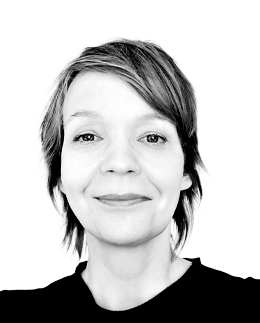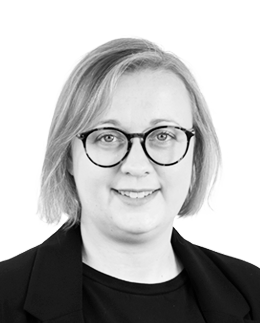Publications
1000 Übereinstimmungen gefunden / 1-15 16-30 31-45 46-60 61-75 76-90 91-105 106-120 121-135 136-150 151-165 166-180 181-195 196-210 211-225 226-240 241-255 256-270 271-285 286-300 301-315 316-330 331-345 346-360 361-375 376-390 391-405 406-420 421-435 436-450 451-465 466-480 481-495 496-510 511-525 526-540 541-555 556-570 571-585 586-600 601-615 616-630 631-645 646-660 661-675 676-690 691-705 706-720 721-735 736-750 751-765 766-780 781-795 796-810 811-825 826-840 841-855 856-870 871-885 886-900 901-915 916-930 931-945 946-960 961-975 976-990 991-1000
Früher Abbruch oder auf schnellem Weg zum guten Abschluss? Der Studienerfolg nicht-traditioneller Studierender.Dahm, G. (2022).Früher Abbruch oder auf schnellem Weg zum guten Abschluss? Der Studienerfolg nicht-traditioneller Studierender. In C. Kerst & A. Wolter (Hrsg.), Studierfähigkeit beruflich Qualifizierter ohne schulische Studienberechtigung. Studienvoraussetzungen, Studienverläufe und Studienerfolg (S. 201-243). Wiesbaden: Springer VS (online first). https://doi.org/10.1007/978-3-658-35429-9_9 |
Übergänge von nicht-traditionellen Studierenden nach dem Bachelorabschluss – Ergebnisse zu einem bislang vernachlässigten Forschungsthema.Dahm, G., & Kamm, C. (2022).Übergänge von nicht-traditionellen Studierenden nach dem Bachelorabschluss – Ergebnisse zu einem bislang vernachlässigten Forschungsthema. In C. Kerst & A. Wolter (Hrsg.), Studierfähigkeit beruflich Qualifizierter ohne schulische Studienberechtigung. Studienvoraussetzungen, Studienverläufe und Studienerfolg (S. 245-288). Wiesbaden: Springer VS (online first). https://doi.org/10.1007/978-3-658-35429-9_10 |
A Life History Calendar in a CAWI? Evidence From Higher Education Research.Lang, S., & Carstensen, J. (Hrsg.) (2022).A Life History Calendar in a CAWI? Evidence From Higher Education Research. Higher Education Research and Science Studies (HERSS). Wiesbaden: Springer VS. https://doi.org/10.1007/978-3-658-36921-7_6 Abstract
Because retrospective collection of life history data requires respondents to retrieve and provide complex information, the process is highly demanding for respondents and prone to error. While a standard questionnaire does not align well with the structure of autobiographical memory, the use of a life history calendar (LHC) may facilitate cognitive processes and reduce response burden. It is unclear, however, whether LHCs yield favourable effects in self-administered mixed-device surveys. To clarify the effects of LHCs, we developed a survey on educational and occupational trajectories in a highly educated population. The survey included an experimental variation using a responsive LHC. |
Besserer Rücklauf durch die Änderung der Incentivierung? Ergebnisse eines Experiments in einer späten Welle eines Studienanfänger*innen-Panels.Ortenburger, A., Grützmacher, J., & Fehring, G. (2022).Besserer Rücklauf durch die Änderung der Incentivierung? Ergebnisse eines Experiments in einer späten Welle eines Studienanfänger*innen-Panels. In G. Brandt & S. de Vogel (Hrsg.), Survey-Methoden in der Hochschulforschung (S. 73-90). Wiesbaden: Springer VS (online first). https://doi.org/10.1007/978-3-658-36921-7_4 |
A Total Survey Error perspective on cross-national student surveys.Gewinner, I. V., Hauschildt, K., Keute, A.-L., Lagerstrøm, B. O., & Mandl, S. (2022).A Total Survey Error perspective on cross-national student surveys. In G. Brandt & S. de Vogel (Hrsg.), Survey-Methoden in der Hochschulforschung (S. 453-475). Wiesbaden: Springer VS. https://doi.org/10.1007/978-3-658-36921-7_16 Abstract
This article provides an overview of the steps required to implement a cross-national survey of higher education students. Discussing the challenges and potential errors involved when drawing upon a total survey error framework, it provides examples based on insights into the EUROSTUDENT project. The article thus highlights aspects to be considered for comparative, cross-cultural student surveys and offers practical recommendations that can help mitigate survey errors and promote the effective implementation of comparative student surveys. |
Die Beteiligung an Gottesdiensten und Gemeindeaktivitäten in den evangelischen Denominationen. Ergebnisse des 2. Kirchengemeindebarometers des Sozialwissenschaftlichen Instituts der EKD.Steinkühler, J., & Rebenstorf, H. (2022).Die Beteiligung an Gottesdiensten und Gemeindeaktivitäten in den evangelischen Denominationen. Ergebnisse des 2. Kirchengemeindebarometers des Sozialwissenschaftlichen Instituts der EKD. In F. Burkhardt, S. Herrmann, & T. Schuckert (Hrsg.), Stuttgarter Gottesdienst- und Gemeindestudie. Religionssoziologische Momentaufnahme christlicher Gemeinden einer europäischen Metropolregion in ökumenischer Perspektive (S. 263-272). Leipzig: Evangelische Verlagsanstalt. |
Die Entwicklung der Studienabbruchquoten in Deutschland.Heublein, U., Hutzsch, C., & Schmelzer, R. (2022).Die Entwicklung der Studienabbruchquoten in Deutschland. (DZHW Brief 05|2022). Hannover: DZHW. https://doi.org/10.34878/2022.05.dzhw_brief |
Wachstumschancen der evangelischen Denominationen auf dem Markt der Religionen: Ergebnisse des zweiten Kirchengemeindebarometers.Steinkühler, J. (2022).Wachstumschancen der evangelischen Denominationen auf dem Markt der Religionen: Ergebnisse des zweiten Kirchengemeindebarometers. In Lämmlin, G. (Hrsg.), Zukunftsaussichten für die Kirchen: 50 Jahre Pastoralsoziologie in Hannover. Beiträge zum 90. Geburtstag von Karl-Fritz Daiber (S. 245-273). Baden-Baden: Nomos. https://doi.org/10.5771/9783748932130-149 |
Beeinflusst studienbezogene Auslandsmobilität das Arbeitseinkommen? Ergebnisse eines Literaturreviews.Netz, N. (2022).Beeinflusst studienbezogene Auslandsmobilität das Arbeitseinkommen? Ergebnisse eines Literaturreviews. Bonn: DAAD. https://doi.org/10.46685/DAADStudien.2022.10 |
Mobilität und adäquate Beschäftigung von Hochschulabsolvent*innen: Welchen Einfluss hat räumliche Mobilität nach dem Berufsstart?Trennt, F., & Dahm, G. (2022).Mobilität und adäquate Beschäftigung von Hochschulabsolvent*innen: Welchen Einfluss hat räumliche Mobilität nach dem Berufsstart? In M. Jungbauer-Gans & A. Gottburgsen (Hrsg.), Regionale Mobilität und Hochschulbildung (S. 173-202). Wiesbaden: Springer VS. https://doi.org/10.1007/978-3-658-36156-3_7 |
Should I stay or should I go? Determinanten der räumlichen Distanz zwischen Schul- und Hochschulort.Quast, H., Mentges, H., & Föste-Eggers, D. (2022).Should I stay or should I go? Determinanten der räumlichen Distanz zwischen Schul- und Hochschulort. In M. Jungbauer-Gans & A. Gottburgsen (Hrsg.), Regionale Mobilität und Hochschulbildung. Higher Education Research and Science Studies (S. 19-45). Wiesbaden: Springer VS (online first). https://doi.org/10.1007/978-3-658-36156-3_2 Abstract
While there are numerous studies on the influence of study opportunities on the decision to attend higher education, studies on determinants of school leavers´´ regional mobility are comparatively rare. This article addresses the question which factors influence the geographical distance between school location and university. Using theories of rational choice, we develop a theoretical framework that integrates several mechanisms explaining mobility. For the analyses, we employ a mobility measure of geographical distance (in kilometres) between the university and the school where the university entrance qualification was obtained. |
Warum in die Ferne schweifen? Regionale Mobilität beim Übergang ins Masterstudium.Ohlendorf, D., Spangenberg, H., & Föste-Eggers, D. (2022).Warum in die Ferne schweifen? Regionale Mobilität beim Übergang ins Masterstudium. In M. Jungbauer-Gans & A. Gottburgsen (Hrsg.), Regionale Mobilität und Hochschulbildung (S. 83-113). Wiesbaden: Springer VS (online first). https://doi.org/10.1007/978-3-658-36156-3_4 Abstract
This article examines (1) which factors promote or hinder regional mobility within Germany when bachelor graduates take up a master’s programme, and (2) which factors influence the distance of migration when graduates change to a new university. Building on rational choice-based theories of migration we describe a change of university as a two-staged migration decision and analyse it using zero-inflated Poisson Regression models. Data from the 2012 DZHW panel study of school leavers with higher education entry certificate were linked to regional indicators from official statistics. n addition to the role of educational background, results indicate that previous migration experiences promote regional mobility. |
Monetäre Erträge regionaler Mobilität: Auswirkungen regionaler Arbeitsplatzwechsel auf die Lohnentwicklung von Hochschulabsolvent*innen in den ersten zehn Jahren nach Studienabschluss.Trommer, M., & Euler, T. (2022).Monetäre Erträge regionaler Mobilität: Auswirkungen regionaler Arbeitsplatzwechsel auf die Lohnentwicklung von Hochschulabsolvent*innen in den ersten zehn Jahren nach Studienabschluss. In M. Jungbauer-Gans & A. Gottburgsen (Hrsg.), Regionale Mobilität und Hochschulbildung (S. 203-241). Wiesbaden: Springer VS (online first). https://doi.org/10.1007/978-3-658-36156-3_8 |
Contact


